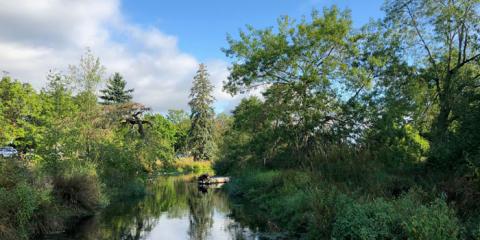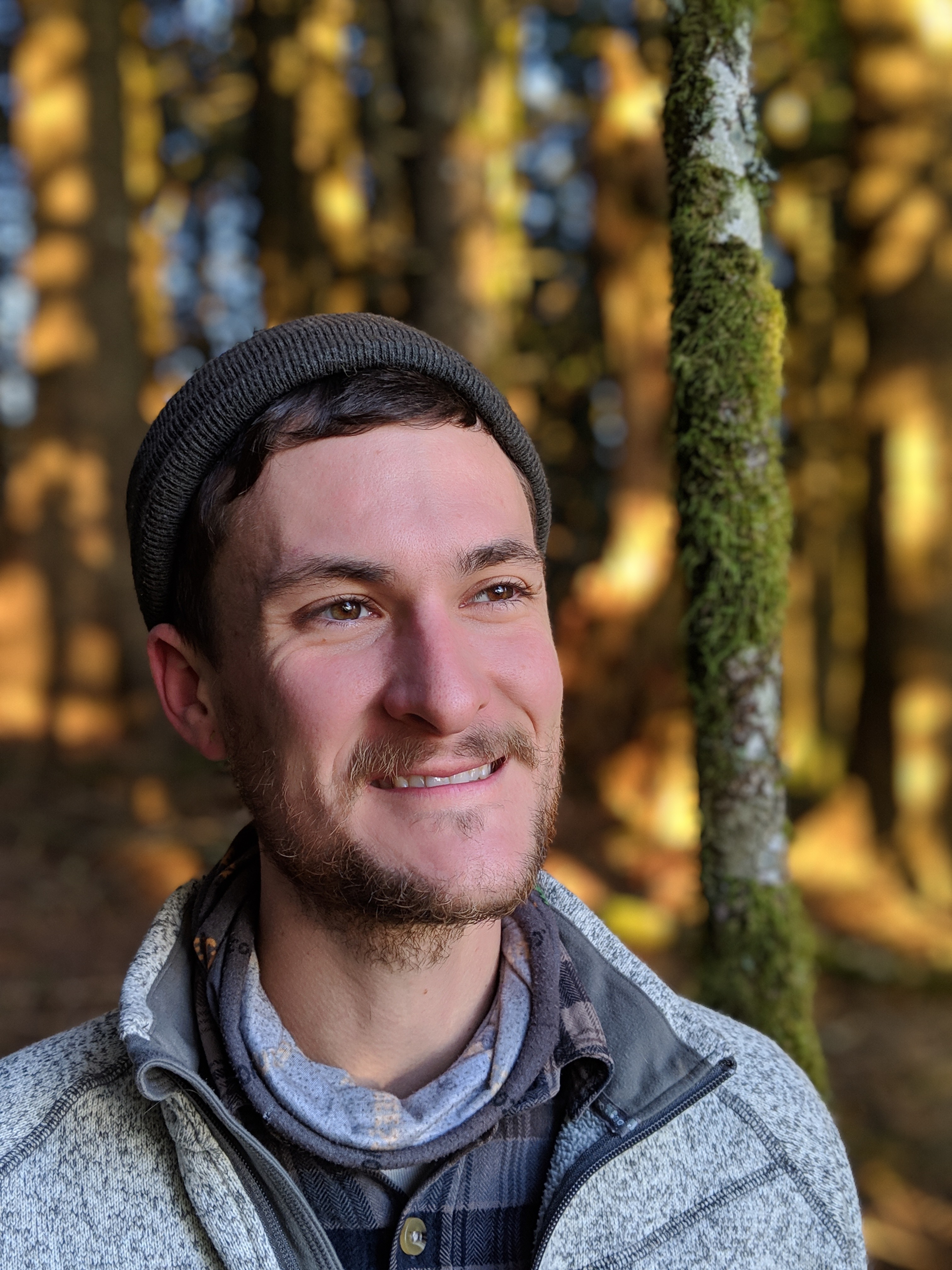Forester Friday: Casey Clapp
November 22, 2019
Forester Friday features an Oregon forester with an interesting or unique contribution to the forestry field. This series is meant to highlight and recognize these stories.
Forestry is predominantly thought of as being a profession set out in the woods, far from cities, but what about forestry in urban settings? This week’s Forester Friday highlights urban forester Casey Clapp, a development tree inspector for the city of Portland.
Casey is responsible for reviewing and permitting street-tree work associated with housing or commercial development in Portland. Some of his daily responsibilities include assessing street trees for health and structural condition, and balancing whether they should be preserved or removed to make way for urban development. He works with public entities such as the Portland Bureau of Transportation and Bureau of Environmental Services, as well as private sector contractors and property owners, to manage removals, pruning and planting of street trees during their construction projects. He also does emergency response work when needed to help clear streets of downed limbs and trees during storms.
In addition to job experience, education has played an important role in Casey’s career. He attended Oregon State University for a bachelor’s in forest management, and continued on for a master’s in environmental conservation at the University of Massachusetts. In addition, he became a certified arborist and qualified tree-risk assessor through the International Society of Arboriculture.

For this profile, Casey answered a series of questions about his forestry story via email. Here are some of his responses.
What is your favorite part of your job?
My favorite part of my work is being a top resource for the city and citizens when it comes to our urban trees. Many folks in the city are concerned about the loss of urban canopy, and it’s my job to be on the front line fighting to retain and protect trees and their growing spaces within the city. It’s very satisfying to me to represent the people of the city and fight to protect a resource that is so important to everyone.
What drove you or why did you decide to work in forestry?
My main drive was a love and passion for trees and forests. I could not learn enough about how trees functioned, both as individuals and as a forest. Ecology, biology, physiology and taxonomy – all these subjects fascinated me, and the question of how they interact drove me to continue to learn as much as I could. In traditional forestry, the objectives range from extracting forest resources to management for fuels reduction. In urban forestry, the main objective is managing urban trees for risk and for the ecosystem services they provide to the city and citizens. With my current position, I get to apply the science of trees to complex situations to make the best call for the good of the people and the tree, and this real-world problem-solving is very satisfying.
What is something you want people to know about your job and/or the impact of your job?
I want people to know that it is not simply filled with tree-huggers hoping to save every tree in the world. Trees are an extremely important component of whatever ecosystem they’re in, including the urban ecosystem. My job is to manage trees as a resource, both in an ecosystem sense and also in a cultural sense. Sometimes this means retaining a tree, and other times it means removing it and replanting a new one. The long-term impact of the work I do will hopefully be seen in 40 years when fully treed streets grace all parts of the city and help maintain it as a comfortable place to live in the face of climate uncertainty.
What is your favorite outdoor activity in Oregon?
My favorite outdoor activity in Oregon has got to be backpacking and camping. I love to strap everything I need onto my back and walk into the wilderness for days at a time. Oregon wildernesses are some of the most outstanding places in the nation, and hold such unique, beautiful landscapes that it’s impossible to not be stunned by them. As a fan of our forests and the plants in them, getting as far into the wilderness as possible affords me the chance to see plants and environments that one just can’t find anywhere else. My favorite place in Oregon is the Eagle Cap Wilderness in the Wallowa Mountains of northeastern Oregon. If you haven’t been, this area is one of most unique ecosystems in the state, and the beauty just can’t be beat.
Casey was also featured in the podcast Ologies with Alie Ward, where he talks about his passion for all things trees. Listen here.
If you know an Oregon forester with an interesting or unique story we should share, email OFRI Social Media Intern Autumn Barber at barber@ofri.org.
